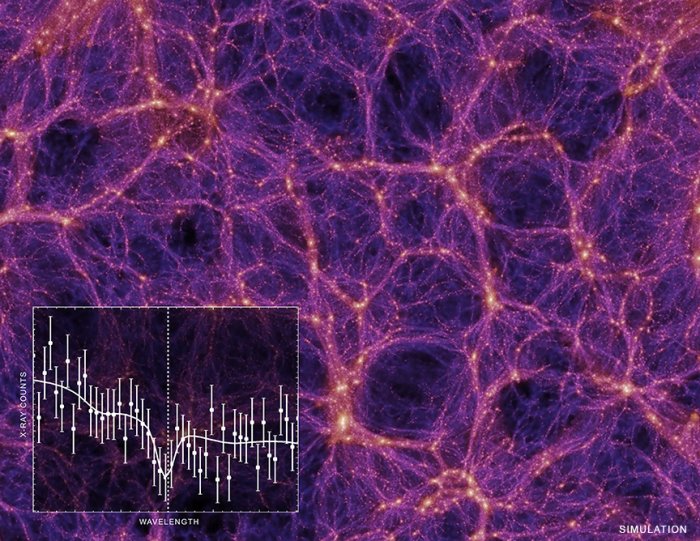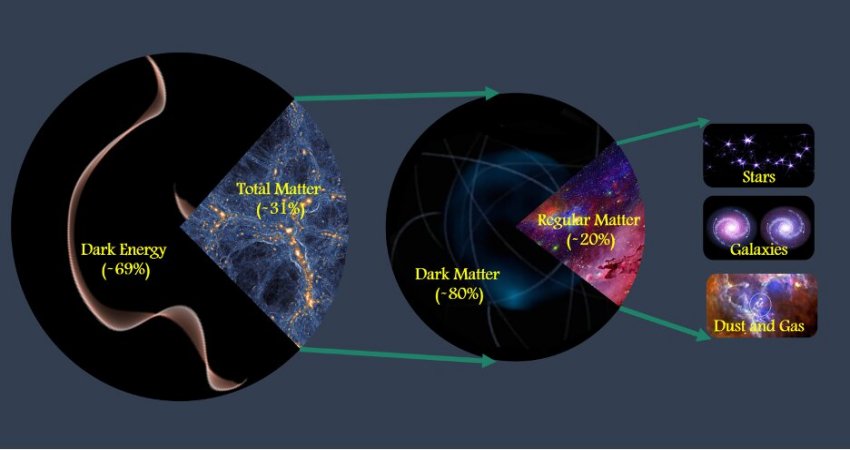Where Is The Universe Hiding Its Missing Mass? – New Results From Chandra X-ray Observatory
MessageToEagle.com – Astronomers have spent decades looking for something that sounds like it would be hard to miss: about a third of the “normal” matter in the Universe.
Now, there are new results from NASA’s Chandra X-ray Observatory that may help locate this elusive expanse of missing matter.
Using a new technique, researchers have found new and strong evidence for the hot component of the WHIM based on data from Chandra and other telescopes.

“If we find this missing mass, we can solve one of the biggest conundrums in astrophysics,” Orsolya Kovacs of the Center for Astrophysics | Harvard & Smithsonian (CfA) in Cambridge, Massachusetts, ” said in a press release.
“Where did the universe stash so much of its matter that makes up stuff like stars and planets and us?”
Astronomers used Chandra to look for and study filaments of warm gas lying along the path to a quasar, a bright source of X-rays powered by a rapidly growing supermassive black hole.
This quasar is located about 3.5 billion light years from Earth. If the WHIM’s hot gas component is associated with these filaments, some of the X-rays from the quasar would be absorbed by that hot gas.
Therefore, they looked for a signature of hot gas imprinted in the quasar’s X-ray light detected by Chandra.
To overcome this problem, researchersfocused on certain parts of the X-ray light spectrum, reducing the likelihood of false positives. They did this by first identifying galaxies near the line of sight to the quasar that are located at the same distance from Earth as regions of warm gas detected from ultraviolet data. With this technique they identified 17 possible filaments between the quasar and us, and obtained their distances.
Because of the expansion of the universe, which stretches out light as it travels, any absorption of X-rays by matter in these filaments will be shifted to redder wavelengths. The amounts of the shifts depend on the known distances to the filament, so the team knew where to search in the spectrum for absorption from the WHIM.
“Our technique is similar in principle to how you might conduct an efficient search for animals in the vast plains of Africa,” said Akos Bogdan, a co-author also from CfA. “We know that animals need to drink, so it makes sense to search around watering holes first.”
Another problem was the faintness of the X-ray absorption. Researchers boosted the signal by adding spectra together from 17 filaments, turning a 5.5-day-long observation into the equivalent of almost 100 days’ worth of data. With this technique they detected oxygen with characteristics suggesting it was in a gas with a temperature of about one million degrees Kelvin.
By extrapolating from these observations of oxygen to the full set of elements, and from the observed region to the local universe, the researchers report they can account for the complete amount of missing matter.
At least in this particular case, the missing matter had been hiding in the WHIM after all.
“We were thrilled that we were able to track down some of this missing matter” said co-author Randall Smith, also of CfA. “In the future we can apply this same method to other quasar data to confirm that this long-standing mystery has at last been cracked.”
MessageToEagle.com










